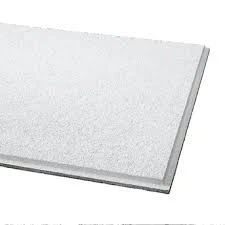- Afrikaans
- Albanian
- Amharic
- Arabic
- Armenian
- Azerbaijani
- Basque
- Belarusian
- Bengali
- Bosnian
- Bulgarian
- Catalan
- Cebuano
- Corsican
- Croatian
- Czech
- Danish
- Dutch
- English
- Esperanto
- Estonian
- French
- German
- Greek
- Hindi
- Indonesian
- irish
- Italian
- Japanese
- Korean
- Lao
- Malay
- Myanmar
- Norwegian
- Norwegian
- Polish
- Portuguese
- Romanian
- Russian
- Serbian
- Spanish
- Swedish
- Thai
- Turkish
- Ukrainian
- Uzbek
- Vietnamese
11月 . 29, 2024 13:04 Back to list
Exploring Innovative Designs for Ceiling Grid Systems in Modern Architecture
The Aesthetic and Functional Appeal of Ceiling Grid Systems
When it comes to modern architectural design, the ceiling often serves as a key component in establishing the ambiance and utility of a space. Among the various ceiling types available, the ceiling grid system stands out due to its unique blend of functionality, versatility, and aesthetic appeal. This article explores the features, advantages, and applications of ceiling grid systems, shedding light on why they have become a popular choice for commercial and residential environments alike.
Understanding Ceiling Grid Systems
A ceiling grid system typically consists of a network of metal beams or channels that support lightweight ceiling tiles or panels. This modular framework allows for easy installation and maintenance of ceiling elements. Ceiling grids can accommodate a variety of materials, including acoustic tiles, plaster panels, and decorative tiles, making them suitable for diverse design schemes.
The grid is usually suspended from the building’s structural ceiling, creating a space above the tiles known as the plenum. This space is crucial for housing essential building systems, such as electrical wiring, HVAC ducts, and plumbing. In essence, the ceiling grid not only contributes to the visual appeal of a space but also plays a functional role in concealing unsightly utilities.
Aesthetic Versatility
One of the most significant advantages of ceiling grid systems is their aesthetic versatility. Designers and architects can choose from a plethora of materials, colors, and textures to create the desired look for a room. Whether aiming for a sleek modern vibe or a more traditional appearance, ceiling grid systems can easily be tailored to fit the overall design scheme.
Moreover, the grid structure allows for creative lighting solutions. Recessed lighting can be seamlessly integrated into the grid, providing an unobtrusive yet effective illumination. Additionally, the ability to mix and match different ceiling tiles enables the creation of unique designs, such as patterned ceilings or accent features that draw attention and enhance the space.
Acoustic Benefits
ceiling grid t

In commercial settings, particularly in open office environments and public venues, sound management is a critical concern. Ceiling grid systems often feature acoustic tiles that absorb sound, reducing noise levels and enhancing speech intelligibility. These tiles come in various sound absorption ratings, allowing designers to select the right option based on the specific acoustical requirements of a space.
By incorporating a ceiling grid with acoustic properties, businesses can create a more productive work environment or provide a comfortable atmosphere in restaurants and auditoriums. This attention to acoustic detail significantly improves the overall user experience, making ceiling grid systems a practical choice for many applications.
Easy Installation and Maintenance
Another compelling reason for the popularity of ceiling grid systems is the ease of installation and maintenance. Unlike traditional plaster ceilings, which can be labor-intensive and time-consuming to install, ceiling grids can be set up quickly, reducing labor costs and project timelines. The modularity of the system means that individual tiles can be easily replaced or removed for servicing essential building infrastructure, such as lighting or HVAC components.
This accessibility makes ceiling grid systems a practical option for spaces that require regular maintenance or modifications. Businesses can save on long-term operational costs by investing in a ceiling system that offers such flexibility.
Eco-Friendly Options
As sustainability becomes an increasingly pivotal factor in building design, ceiling grid systems can also play a role in environmentally friendly practices. Many modern ceiling tiles are fabricated from recycled materials, and some manufacturers offer green certification for their products. Utilizing these eco-conscious options not only reduces waste but also contributes to healthier indoor air quality, making it a win-win for both the environment and the occupants.
Conclusion
Ceiling grid systems represent a harmonious blend of form and function, providing a versatile solution for both aesthetic requirements and practical applications. Their ability to enhance acoustic performance, allow for easy maintenance, and offer a variety of design options makes them an attractive choice for a multitude of environments. As architects and builders continue to seek innovative ways to create dynamic spaces, ceiling grids will undoubtedly remain a staple in architectural design, offering endless possibilities for creativity and functionality.
-
Transform Interiors with PVC Gypsum Ceiling: A Stylish, Durable, and Moisture-Resistant SolutionNewsMay.19,2025
-
The Smart Interior Upgrade: Discover the Durability and Versatility of Gypsum Ceiling Access Panel SolutionsNewsMay.19,2025
-
The Smart Choice for Interior Design: Discover the Value of PVC Gypsum Ceiling SolutionsNewsMay.19,2025
-
Mineral Fiber Ceiling Tiles: The Smart Blend of Performance and AestheticsNewsMay.19,2025
-
Mineral Fiber Ceiling Tiles: The Superior Choice Over Gypsum for Sound and Fire SafetyNewsMay.19,2025
-
Mineral Fiber Ceiling Tiles: Eco-Friendly Strength and Style for Every CeilingNewsMay.19,2025







